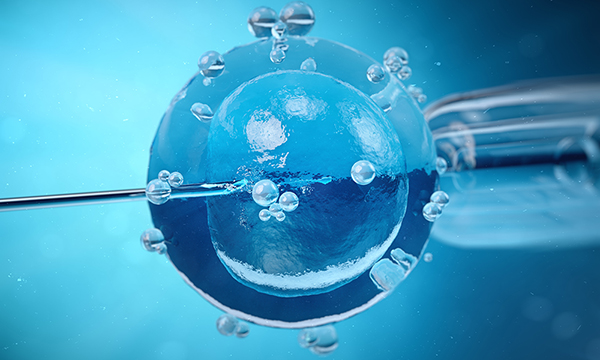CELLS FOR CRYOSHIPMENT ARE PREPARED IN LABORATORY ACCORDING TO PRECISE TIME SCHEDULE AGREED WITH SHIPPING COMPANY.
Cells are cryopreserved and carried in specially designed cryoshipping container. A part of the transport cryocontainer is a temperature measuring device constantly monitoring the temperature inside the container, keeping the level about -196 ° C. This is the exact technology as it is used for long-term storage of cells in clinics, ensuring the stability of the internal environment.
What exactly means to cryopreserve your reproductive cells
Cryopreservation of human reproductive cells plays an important part in an infertility treatment that increases cumulative outcome while decreasing other attempts’ costs. It enables couple to have more than one attempt with no need for woman to undergo an ovarian stimulation cycle again.
Cryopreservation is also used for social freezing, to preserve fertility. To cryopreserve your oocytes or sperm can be just preventional choice or help cancer patients who are looking to preserve their fertility later on after completing their treatment.
A good freezing technique is essential when trying to increase the chances of pregnancy with fertility treatment with frozen cells.
Cryopreservation methods
Traditional - slow freezing - cryopreservation method allowes ice to form and solute concentrations to rise during the preservation process. In slow freezing, the embryos and oocytes are dehydrated by being exposed to one or more cryopreservation solutions for 10-15 minutes. The cells s are then loaded into plastic straws, which are heat-sealed and placed in the freezing device which then slowly drops the temperature to -30°C.
Slow freezing, first used in 1986, was the only reliable way to freeze cells for almost 20 years, before vitrification method breakthrough that brought the vitrification process to a safe and consistent stage that could be used at the clinical settings. It was truly a game-changer for cryopreservation: studies have found that vitrified cells have an over 95% freeze-thaw survival rate (compared to the approximately 66% survival rate of cells during slow freezing).
Vitrification (from Latin vitreum, "glass" via French vitrifier) is fast cooling method leading to the transformation of a substance into a glass, that is to say, a non-crystalline amorphous solid. Not only the cells but also the whole solution is solidified without the crystallization of ice.
Vitrification is an ultra-rapid process whereby the embryo or other cell is transitioned from 37 to −196 °C in <1 s, resulting in extremely fast rates of cooling. The fast rate of cooling allows for the content of the straw to turn into a glass-like substance rather than ice. Avoiding the formation of ice crystals is essential when it comes to thawing the embryos at a later date and increases the survival rate to over 95%.
Advantages of human cells cryopreservation
- In case of unsuccessful first IVF attempt, there are cells/embryos "ready" for the next attempt.
-
If planning more children, to freez embryos from one treatment cycle is the best option for future use without need to go throughout the whole stimulation and collection process again.
- If one of the partners is at risk to became infertile in the future (undergo chemotherapy or another challenging treatment), it is adviced to freeze reproductive cells.
-
Preventional reasons are becoming more popular, young people are more aware about close connection between fertility and age, they think ahead, check their fertility and cryopreserve their cells when at best age "just in case" their fertility changes or they plan for family later in life.
Is cryoshipping of your cells safe? Learn more on our blog: Is transport of frozen cells really safe?

